Transition Training in the RV-10
Part of my preparation for an uneventful first flight is the process of Transition Training in the RV-10. To give perspective to the process, going in to the training I had approximately 460 hours of time, in a few various planes: C-150(2)/C-172/C-177/C-182RG, Piper Cherokee 140/160(Warrior), Beech Sundowner & Sierra, Citabria, and even 2 flights in RV-10's and one in an RV-6. Of the various certified models, I think the Sierra best approximates the RV-10 in general flying feel, but none of them adequately match the control feel and performance of the RV-10. The Sierra was where I got my Complex signoff, and the 182RG was my High Performance Complex. Let me tell you, the 182RG is basically the exact opposite of the RV-10. In addition, none of these planes will give you quite the powerful kick in the butt as you push in that throttle and start down the runway. The words "Rocket", "Raped Ape", and "Bat out of Hell" come to mind when you shove in the go lever. Oh, and by the way, with the recent SB on the rudder hinge, I was "stuck" flying the "underpowered" and "sluggish" N220RV with it's measly 210HP Continental. I say this tongue in cheek because it has PLENTY of go to impress any pilot, and I can only imagine how much more there will be with the 50 HP extra that my plane will have. In my Taxi tests I was assured that mine will perform at least as well.The one thing that will be a small departure from flying my own RV-10 is the instrument Panel. N220RV has one or two things missing from it that my panel has. (As in, that Yugo is a bit different than that Lexus at the dealership) I've actually not flown in such a sparsely equipped plane before, even when you factor in my Cessna 150 time.
Scott Schmidt gave a great write-up of his RV-10 flying time a couple weeks ago, so I was slightly prepared for the experience. During takeoff the procedure is one notch of flaps (the "fake" one to get it down to zero from the Reflex position), then squeeze in the throttle over a few seconds. As soon as you get full throttle, you're ready to ease the stick back slightly just enough to get the nosewheel off the ground. In less than 10 seconds you'll be climbing like, well, those phrases listed above. The rudder effectiveness is enough to stay centered from about the time you get 3/4" throttle in, and you've moved only a few feet at that point. Power back to a reduced power climb if you have no reason to hit the flight levels in seconds, and you're instantly outperforming most of the single-engine certified G.A. planes.
On downwind you'll power back to about 14" and 2350RPM and ease it back to about 90-100 Kts. Abeam the threshold you have to work hard by pulling the power all the way off to get the speed down below the approx. 90Kt flap speed to give it the first "real" notch of flaps. (The reflex position is designed for cruise). This speed, by the way, is pretty darn close to your approach speed, which makes it kind of a pain. After you have the flaps down, and the prop forward, you can bring that RPM back up to about 1900 and you're coming down at about 500fpm, which is not how it looks out the window. Trust me that this baby has good sink when you are powered down a bit with flaps down. Rounding to base or final you throw in your last notch of flaps and you really feel the brakes come on, and the sink rate increases dramatically. Keep the approach going at about 75Kts or so. You get too slow and you drop too fast, but do keep in more speed in rough air.
A note about trim. The Ray Allen trim servos will work very well for trimming your plane out during takeoff and descent. On my flights, I had John C. in the back seat as ballast. All landings were a breeze, and we required some nose-down trim on takeoff. On landing we were fairly neutral to slightly nose-up trim. The Ray Allen servos in their standard config, are much quicker and more sensitive than I expected after moving them around for testing. You can only tap them in cruise, and even that can be a little much. I'm going to fly a while and then decide if it needs speed control or not. My first impression is that it would be nice, but is not "necessary".
As Scott also mentioned, you fly this thing nose down all the way to the threshold. It does not take long to get it to flare, and it wants to be pretty low before the flare. As you reach the ground, you simply level it out, and as speed bleeds off you increase that angle to keep the nosewheel off the ground, keeping it off throughout the rollout until you're almost stopped. In a Go-around, be ready to retract flaps after putting in full power, because they take a long time to come up.
I was initially nervous with the free castering nosewheel, but I have found that in both my taxi testing and the transition training that it is a complete non-issue. It works very well, and I could not ask for more.
Stalls
We performed both power-on and power-off stalls, with some power-on departure stalls while turning. Even in 220RV, I found that it has so much power that you have an extreme ability to get very nose high in the stall, and it has the power to keep you from having much of any stall break. It's going to be a sinking mush, but still nose high unless you push the stick forward. It's probably one of the easiest planes to fly out of a stall, although the Cherokee's and Sundowners were both real easy too. The difference is the -10 is much easier to feel the stall coming on. Also, slow flight is a non-issue either. It handles fine in slow flight. The annoying thing is that in 220RV, the stall warning switch activated a little often, well before the stall would actually occur. It's good warning, so basically in the -10 the only excuse for a stall would be if you get complacent because you ignore that buzzer because it cries wolf too often.
Cruise was great, and I know I was crusing at 175+ Mph at times, but I honestly didn't care about what performance I got, as I knew it wouldn't compare to the IO-540 models exactly, which is what I have.
Turbulence and Crosswinds
I can give you one big tip on something NOT to do. Well, here's the story and you'll get the tip. Day 2 had us out on a windy day. Many airports were reporting 30-35Kts, although Scappoose (sp?) was calm. This was a good opportunity to go looking for trouble, so we headed out to more windy airports. I found that crosswinds in the -10 are interesting as any plane, where you have to be ready for any gust or change, but basically they are also the same as in any other plane. Nothing special. It does, however, have great rudder and aileron effectiveness, so we had no trouble landing in winds that were 45 degrees off centerline at 25Kts. Sure, the ride sucked, but the landings were do-able if you have good crosswind skills in general. I do absolutely not think that if you're a newly certified pilot that you should go out in the conditions I did on day 2 though. The RV-10 in general is a handful for a new pilot, and the more power the harder it gets. Sure, it can be flown and landed easily, but you probably can't jump in with 40 hours in a C-172 and just fly the -10 comfortably without probably much more than the 5 hours of traininig that I had to take for insurance. (AIG required 5 dual / 10 solo)
So, what not to do... Well, I was on my way back to home base after the crosswind workout. Portland, being in the hills/mountains, and being windy, was fairly turbulent to the extreme that I wouldn't take my family on anything but a couple minutes of what we went through to this point. Then I made the fatal mistake. I asked Mike, "So compared to the turbulence we've been in today, how much more would you allow yourself to fly in with this airframe?" You know, you always wonder those things... Well, Mike didn't get his chance to answer, because maybe 5-10 seconds at most later, we crossed a ridgeline and a turbulent updraft hit us like we smashed a car off the highway through a ditch. I got shot out of my seat and into the canopy very hard, smashing the headset off my head. In the back, a camera went from rear seats into the tail, and a briefcase in the tail came up and nailed John in the head. I think Mike also took a small hit to the head from the canopy, but I'm not sure. Wth my headset off, the noise changed drastically and with the sound change it sounded to me like some major part like the rear bulkhead must have opened up. Nope, all was fine, but it was just the lack of headset. Looking at the panel, the G-meter showed we had a nice +3 and -2 combination hit. Let me tell you, I know airframes take much more than that, but I really don't think people should/would. Sure, we had some bounces all day, but nothing even close to what this one was. The nice part was, I now know that when my wings jiggle a little, and we hit some good bumps, it's still going to keep flying. What did I learn? Quit asking stupid questions about turbulence!
Mike
I did my transition training with Mike Seager in Oregon. (503-429-1562) He has lots of experience in RV's. I found him very friendly to fly with, and very professional. I'd highly recommend him, but you really should plan ahead and book early. He gets pretty much full in the summer months, and has to turn many away. Also, when I got my insurance quotes from NationAir, AIG required 5 hours, but Global required 10, and Global had specified Mike and no other (which will probably change as other Transition trainers get RV-10's flying). It's obviously a very small market for Transition Training. You should find sometime in spring 2006 that Alex De Dominicis is ready to start training also. He's currently flying off the insurance required time before he can train in his plane. Refer to http://www.rvtraining.com/ for more info. Try to get your training early and you should really plan ahead....even if it means getting the time in now, but not flying for a year. You can always go back to the factory or find another RV-10 for a quick ride to get re-familiar, but you want to guarantee you have the insurance required time, and the experience Mike will provide. Mike definitely was a friendly pilot to fly with, because he never actually clobbered me when I did things that we just didn't see eye-to-eye on, like how my feet were most comfortable on the rudder pedals. (I personally feel the pedals would feel nicer if they were 1" lower.) I believe though that through all of the things you're going to learn, you should at least attempt to do things the way Mike teaches you. Pilots develop their own comfortable procedures and sometimes habits, both good and bad, but you owe it to yourself to bow to the experience of someone like Mike and make an attempt to try everything their way for the duration of your training.
Price? Expect too pay about $775 combined for the plane and the instructor for transition training, depending on your time elapsed. I know I don't like to have to come up with that kind of money for what may seem like a non-essential, but it's worth it. For what it's worth, my first landing was one of my best during the trip, so it's not necessarily going to make you feel like you're learning something, but give it some time and remember that you'll always take home some kind of valuable experience when you fly with a good pilot.
Here's some photos of the trip. Transition training couldn't be done in a better place...mountains for both scenery, and flight variability. Lots of airports in the area, and TONS of RV guys. If you go out that way for training, do post to the Matronics list and let people know. There are many members who monitor the list, and they'll love to meet up with you while you're there.
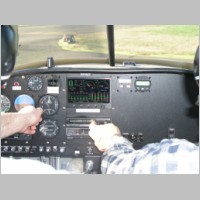
|
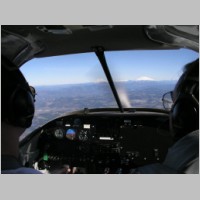
|
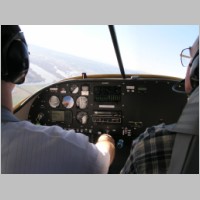
|
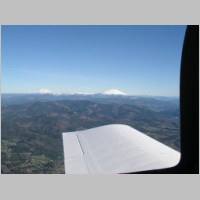
|
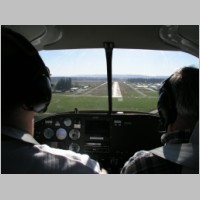
|
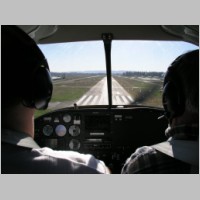
|
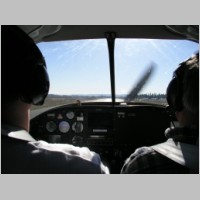
|
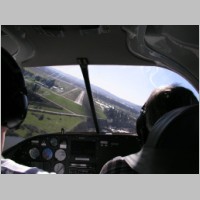
|
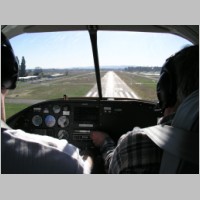
|
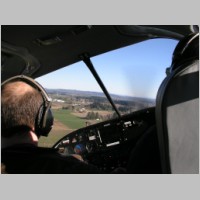
|
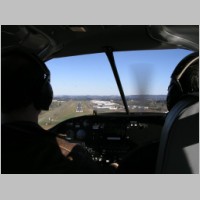
|
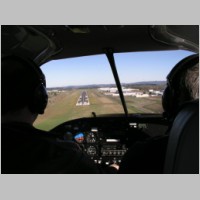
|
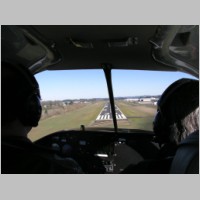
|
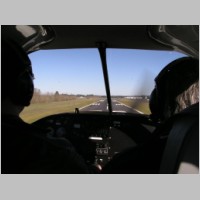
|
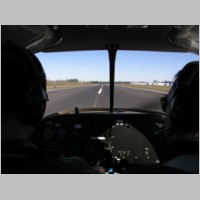
|
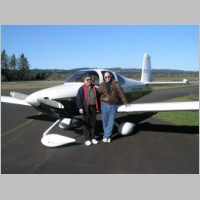
|